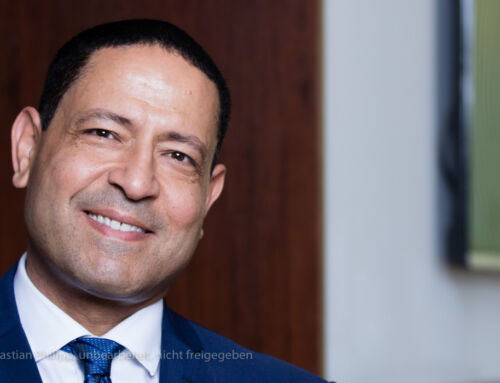
Dr Verónica Pérez Guarnieri is a practising conference interpreter, ISO and conference interpreting consultant and ATC Certification auditor specialising in interpreting services. She is also the long-term leader of ISO standard development projects, responsible for the inception of standards such as ISO 18841 on interpreting requirements and recommendations.
In this blog, Verónica talks about her background and specialism in interpreting services, the role of interpreting standards in raising the bar, and the challenges and opportunities new tech solutions bring to the profession.
Tell us about your background
I trained as a conference interpreter in Argentina and gained my MA and my PhD degrees in Spain. I have been a practising conference interpreter for over 30 years now, and today I work as both a conference interpreter and a conference interpreting service provider, a member of the prestigious consultant interpreters network Calliope-Interpreters.
I’m also very closely involved with AIIC, the International Association of Conference Interpreters. And of course, with the development of ISO standards for interpreting – that has been my passion for over a decade.
What I most like about my work as an interpreter is bridging the language gap and building solutions that enable my clients to achieve their objectives. What I always say to my clients is that when it’s time to negotiate a major contract or sign a bilateral agreement, you need to concentrate on the essence of the matter and dedicate all your mental resources on what you want to say. Leave the language issues to me, I will deal with them.
Interpreting standards raise the bar
I have always believed in the power of standards for the professions, services and products that are not necessarily regulated by law.
I have been working as an ISO expert and convenor of several ISO standards for interpreting that have emerged over the past decade. It has been fantastic to be involved in the development of international standards for interpreting services, starting with the general interpreting services standard ISO 18841, and lately the specialist standards ISO 20228 on legal interpreting, ISO 21998 on healthcare interpreting, and the interpreters´ flagship standard ISO 23155 on conference interpreting.
I also love working as an auditor with ATC Certification, because I see my role as an educator. During my audits, I propose suggestions, recommendations and observations which help the client to find a better way of providing their services – so the audit process acts as best practice review and training, not as a fault-finding exercise.
The challenge of AI-enabled services
As an experienced practising interpreter and an interpreting service provider, I see daily how the adoption, implementation and certification to interpreting services reflects genuine best practices in the industry.
We still have a lot of work to do in terms of raising awareness of these international standards, so that our clients know what they can demand in terms of quality interpreting, and so that we are helping the market to adopt standards faster.
The emergence of more sophisticated remote hybrid solutions and AI-enabled services in the interpreting space will challenge the way we provide interpreting services. We need to move with the times, and standards will also need to catch up. We will see more machine interpreting used as an aid, although it’s far from clear still what shape that will take. Right now, we are working on a new standard to define best practices and requirements for interpreting hubs.
As language service professionals, we need to continue doing what we do now – providing our clients with the services that enable them to do what they need to do, across linguistic and cultural gaps.





